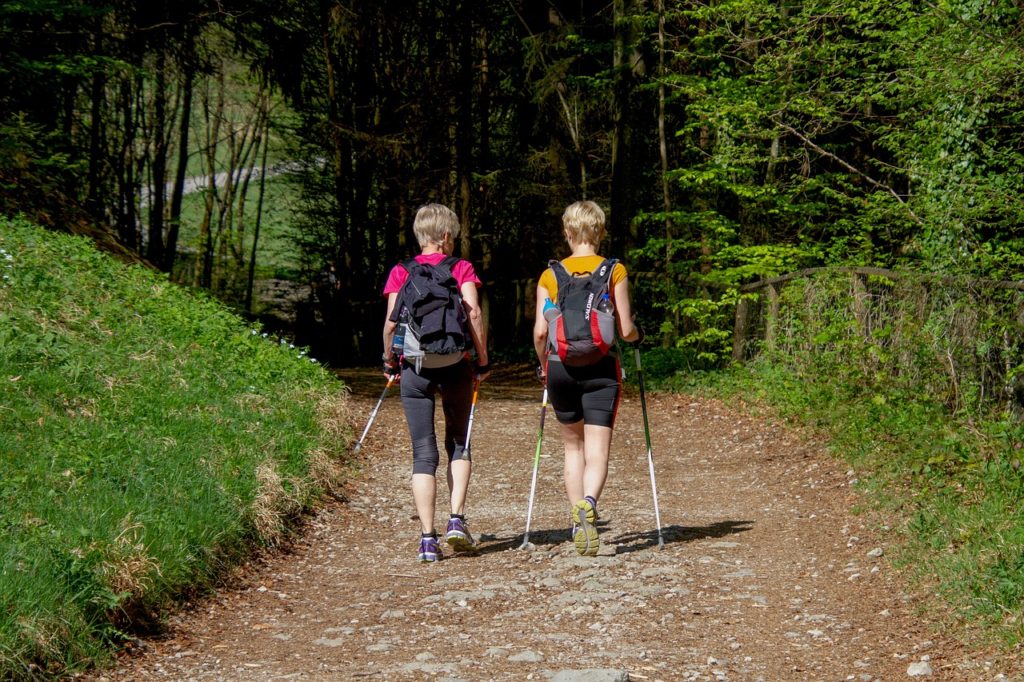Understanding Joint Pain in Women 50 and Older
Do your knees feel achy or constantly suffer from stiff hips? Or, perhaps you must slowly get up because of lower back pain. These are common complaints that I hear from my clients daily. They often have trouble understanding why they feel this way and wish to relieve the pain and suffering.
Why is this happening, and what are the causes of joint pain? It’s important to understand how these areas of the body work, and why they tend to endure wear and tear in women.
How many women suffer from chronic pain?
Chronic pain is incredibly common, with about 50 million adults dealing with chronic pain in their lives. Nearly 11 million chronic pain sufferers are women, and about 24 million are 50 and older. Women tend to discuss their pain more than men, but it remains unknown whether men suffer in silence or if women feel pain more acutely than their male counterparts.
Osteoarthritis is one of the most common forms of arthritis women suffer, which wears down joints in the hips, knees, and hands.
Which jobs increase your risk for chronic pain?
Women who previously worked in healthcare, elementary school teachers, or labor-intensive jobs tend to suffer from chronic joint pain more often than others.
Which joints are affected by osteoarthritis?
Whether it’s osteoarthritis, rheumatoid arthritis, or another chronic inflammatory disease, these are the three main joints that are the most at-risk for pain:
- Tibiofemoral joint (knee joint)
- Spinal joints (facet joints and disc joints)
- Femoroacetabular joint (hip joint)
Anatomy of tibiofemoral joint (knee joint)
The tibiofemoral joint is a hinged synovial joint located between the proximal tibia and distal femur enclosed by a thin fibrous sheath.
It has ligaments, muscles, cartilage, and tendons that keep the joint stable when you get out of a chair, wash dishes, and walk around. Its nerve and blood supply keep the joint healthy and vibrant. It is surrounded by twelve bursae that provide a protective cushion between the bone and other structures. The medial and lateral menisci enhance the depth and stability of the knee, along with force absorption.
What does it do?
It provides support to the joints, ligaments, and tendons. The most common movements are bending and straightening of the knee. Additional movements are internal and external rotation of the tibia in a fixed position.
Spinal joints (facet joints and disc joints)
The spinal column comprises 33 vertebrae body and two fused vertebrae, sacrum, and coccyx. Nerve roots and blood supply originate from the spinal column extending to the peripheral structures to give them life. It’s composed of facet and disc joints to allow it to move freely in different planes.
Why are they important?
The spinal joints protect the delicate spinal cord and are unique because of their flexibility.
Femoroacetabular joint (hip joint)
This is a ball and socket joint that joins the femoral head to the acetabular. It’s surrounded by multiple ligaments and tendons to keep it stable.
Why is the hip joint important?
It’s a multi-axial joint, so it moves in multiple directions, including: external rotation, internal rotation, extension, flexion, adduction, and abduction. It is known to be the most stable and weight-bearing joint because it carries major of the body’s weight when you’re going about your day, such as walking, standing at the sink, and running, and more.
What can you do to prevent joint pain?
There are several natural ways to prevent and reduce joint pain. Some of these include: maintaining a healthy weight, wearing proper shoes, eating healthy food, exercising, hiring a trained professional to help, and practicing good body movement techniques.
Think before you act when completing a task, and ask yourself, “how can I complete this safely without increasing stress and strain on my joints?”
What are good treatments for joint pain?
The most common antidote for pain is pain medication like Ibuprofen, or narcotics, which can lead to addiction, hemorrhage, vomiting, anemia, overdose, and chronic illness (i.e., depression, anxiety, and insomnia).
Consult with your doctor about the best treatment option for you and consider turning to natural remedies for joint pain.
Who do I talk to about joint pain?
Talk to your physician, physical therapist, chiropractor, or a holistic medical professional to help you understand more about what can help you relieve your chronic pain in these joints.
Suffering from joint pain? I can help!
I’ll complete a total pain relief assessment to customize a plan specifically catered to you. We will work together to eliminate your fear of movement and allow you to move safely while exercising with chronic pain. Many clients have told me they are sleeping better, feel more energized, experience less pain, and feel happy and joyful because of our sessions together.
I help women 50 and over move freely and fearlessly while managing chronic pain without medication. I help them to debunk the phrase, “I’m too old to exercise,” and help them realize they can move with the guidance of a trained professional.
If you’ve tried everything but haven’t seen any changes and feel like giving up, I would love to help you.
Schedule a FREE 30-minute one-on-one virtual assessment here ?FREE Virtual Assessment
Grab my Free Revive Yourself from Osteoarthritis Morning Stiffness ?here
Join my private Facebook Group below
- 50 & over women stop battling chronic pain with medication: Click here to join
Let’s Connect on Social Media
